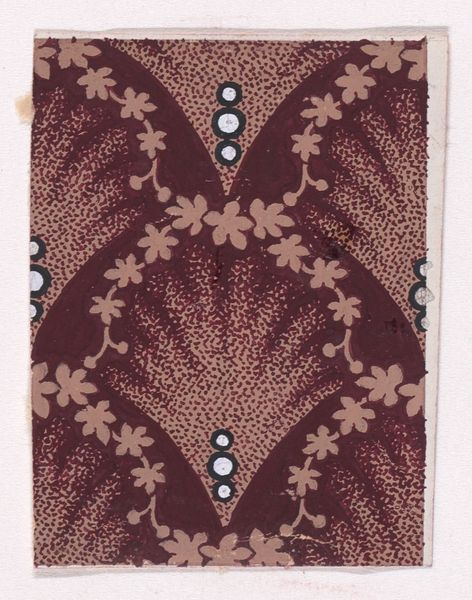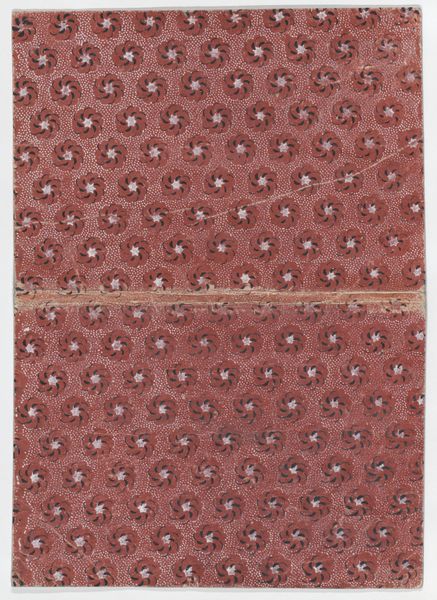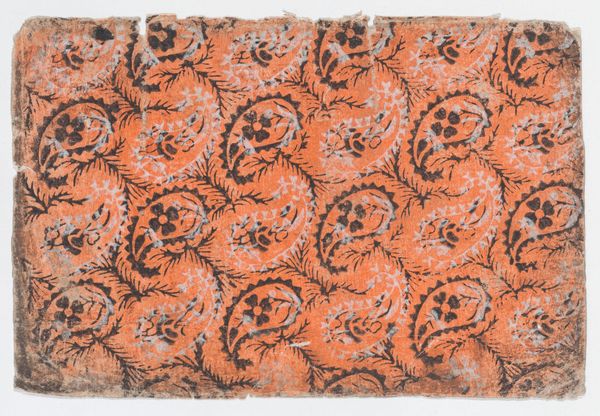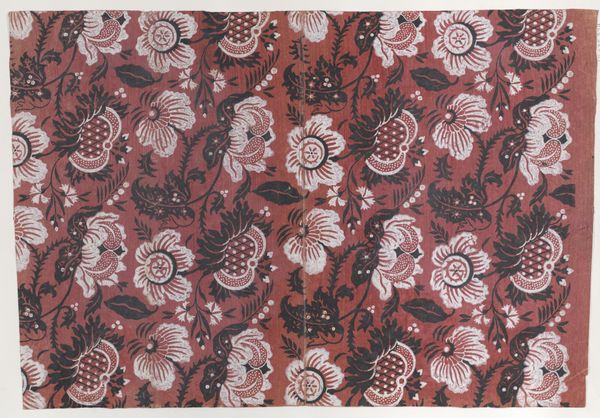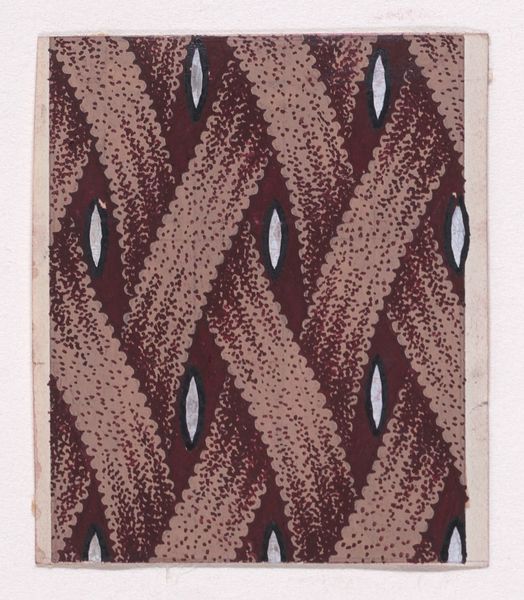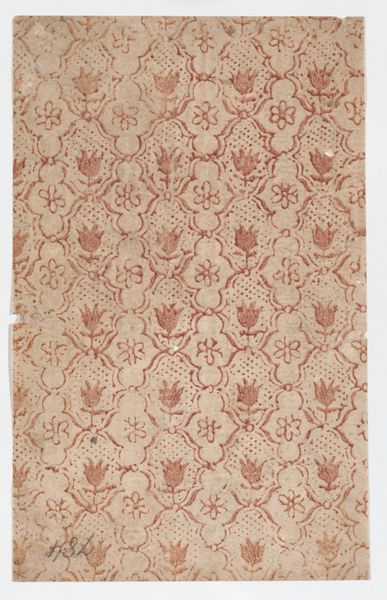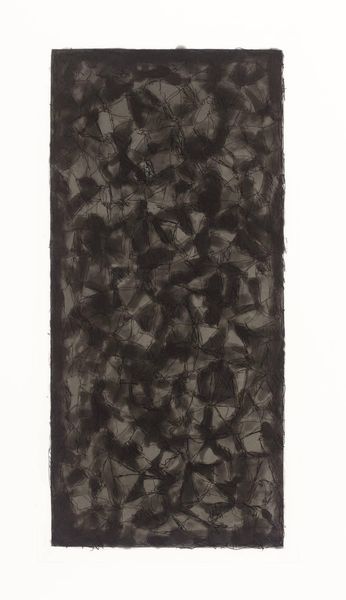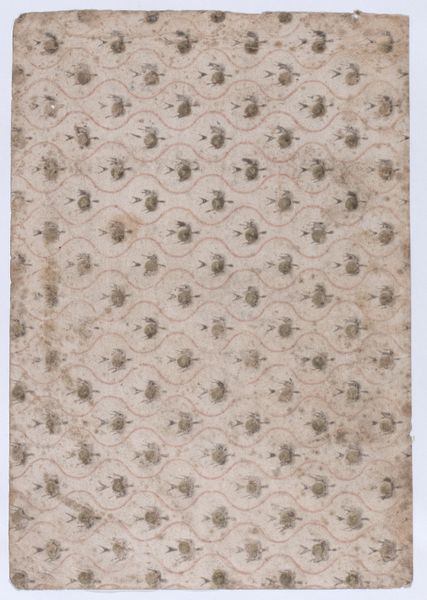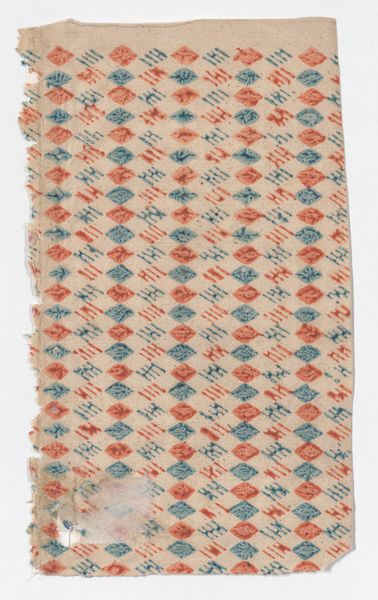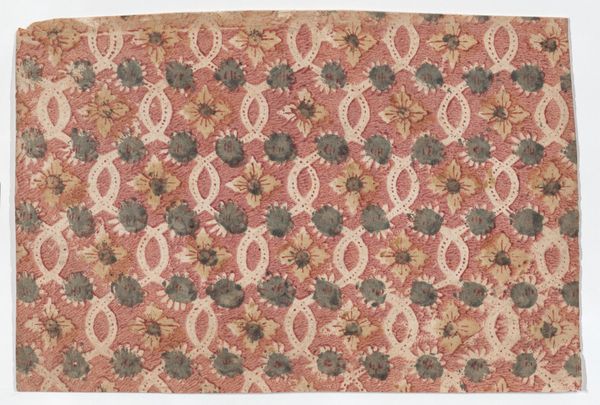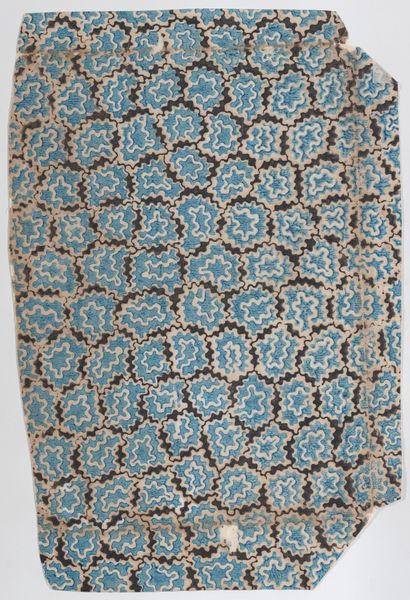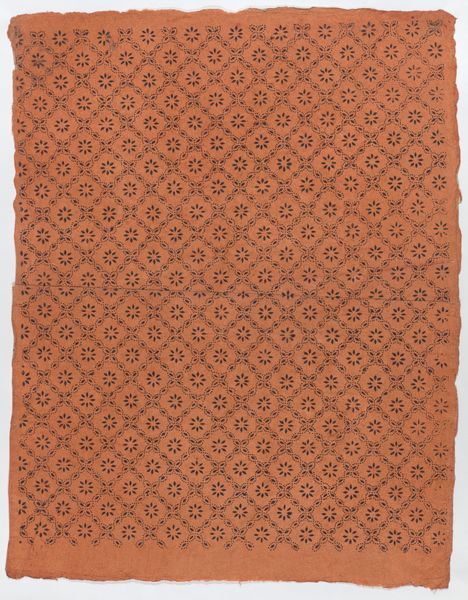
Paste paper with purple, yellow, and green patterns 1700 - 1800
0:00
0:00
drawing, print, paper
#
drawing
# print
#
paper
#
geometric
#
texture
#
decorative-art
Dimensions: Sheet: 7 11/16 × 13 7/8 in. (19.6 × 35.2 cm)
Copyright: Public Domain
Curator: Ah, this paste paper from between 1700 and 1800! It's part of the collection at the Metropolitan Museum of Art. Editor: It kind of looks like abstract Cheerios scattered across a textured field! The browns, greens, and muted yellows give it a wonderfully earthy, almost melancholic vibe, don't you think? Curator: Exactly! And it's unsigned. What's fascinating is the method—paste paper creation was a practical and artistic process, not something we associate with high art but more with craft or even just plain usefulness. Editor: Useful for what, though? Bookbinding, maybe? The colours suggest something earthy; a humble yet beautiful sort of purpose. The random geometry speaks to the beauty of imperfections. Curator: Book covers and endpapers are exactly the kinds of things I'm thinking of. But beyond function, consider how the patterns work: a repetitive series that makes a new texture by combining simple forms in creative combinations, to create complex results that give it such visual rhythm. Editor: Agreed. It makes you wonder, doesn’t it, about the anonymous artist's frame of mind while they created this? Was there an intentional aesthetic statement being made, or was this simply a case of skillful handiwork with an eye for color? I find beauty here that seems entirely unexpected, perhaps even unintentional, born more out of repetitive actions and craft know-how than expressive yearning. Curator: Yes, perhaps so! Yet these functional pieces allowed creativity to persist beyond the expected masters of craft! And for a moment, while working on a design to simply use later, a creative eye made art where others saw usefulness. The simple beauty made this piece a masterpiece of function. Editor: Absolutely, and maybe there’s beauty to that freedom that wasn’t chasing greatness. Perhaps we, too, should chase excellence rather than “greatness.”
Comments
No comments
Be the first to comment and join the conversation on the ultimate creative platform.
